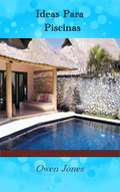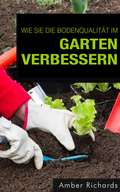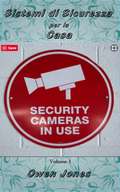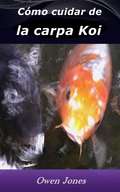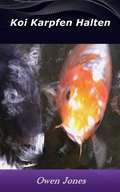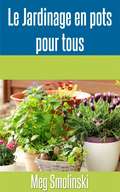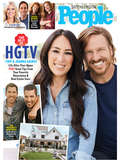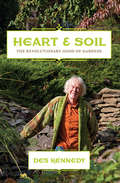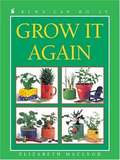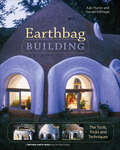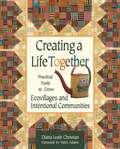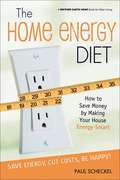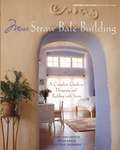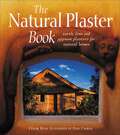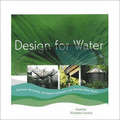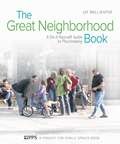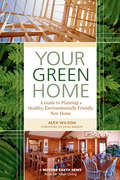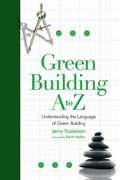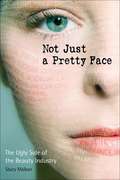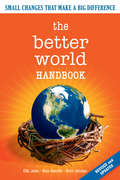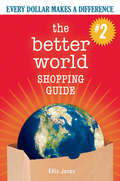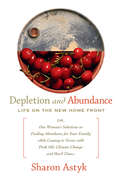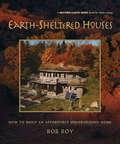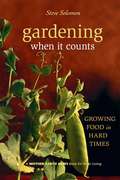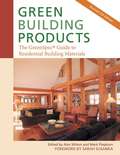- Table View
- List View
Ideas Para Piscinas: Diecisiete capítulos sobre cómo crear, mantener y usar de forma segura una piscina de jardín.
by Owen JonesHola y gracias por comprar mi libro electrónico llamado ‘Ideas Para Piscinas'. Espero que encuentre aquí información útil, práctica y posiblemente rentable en el futuro. La información en este libro electrónico sobre cómo aprovechar al máximo las ideas que pueda tener sobre piscinas hogareñas está organizada en 17 capítulos de aproximadamente 500 a 600 palabras cada uno. Espero que les interese a quienes quieran comenzar a construir o aprovechar al máximo una piscina hogareña. También será útil para aquellos que podrían estar pensando en iniciarse en el negocio de construir o cuidar piscinas. Sin embargo, es una guía para principiantes, aunque con la esperanza de que sea lo suficientemente interesante como para comenzar. Como un bono adicional, le concedo permiso para usar el contenido en su propio sitio web o en sus propios blogs y boletines, aunque es mejor si los vuelve a escribir con sus propias palabras. También puede dividir el libro y revender los artículos. De hecho, el único derecho que no tiene es revender o regalar el libro tal como se le entregó.
Wie Sie die Bodenqualität im Garten verbessern
by Amber RichardsBringen Sie Ihren Garten in Schwung: mit einem gesunden Boden und auf ganz natürliche Weise! Mit diesem einfach zu befolgenden Ratgeber erhalten Sie köstliche Früchte, gesundes Gemüse, herrlich duftende Blumen und kräftige Kräuter. Niemals würden Sie ein Haus auf einem morschen Fundament errichten. – Wieso sich also mit schlechter Erde im Garten abgeben, wo alle Pflanzen vor sich hin kümmern? Egal, ob Sie einen grünen Daumen haben, mit „Wie Sie die Bodenqualität im Garten verbessern“ verpassen Sie Ihrem Garten auf mühelose Weise eine Verjüngungskur. Er wird nicht nur vor gesunden Pflanzen strotzen, sondern auch Vögel werden sich dort wohlfühlen. Nach den ersten Erfolgen fragen Sie sich dann ganz bestimmt, wieso Sie nicht schon viel früher gehandelt haben! Mit diesem Buch lernen Sie, wie man den Nährstoffgehalt des Bodens erhöht, die Bodenstruktur verbessert und die Widerstandskräfte des Gartens in praktisch jedem Klima weckt. Dank der in diesem Buch wunderbar beschriebenen natürlichen Methoden können Sie endlich stolz auf Ihren Garten sein und sich zu jeder Jahreszeit an einer gesunden und köstlichen Ernte erfreuen. Warten Sie nicht länger, sondern verwandeln Sie mithilfe dieses Ratgebers Ihren Garten in eine üppige, fruchtbare und gesunde Oase, in der Ihre Pflanzen gedeihen können.
Sistemi di sicurezza per la casa: volume 1 (Come fare per... #33)
by Owen JonesLe informazioni in questo ebook riguardanti vari aspetti della protezione della vostra famiglia e della vostra casa, e le idee correlate, sono suddivise in 15 capitoli di circa 500-600 parole ciascuno. Spero che sia interessante per coloro che si preoccupano della propria sicurezza. Come bonus aggiuntivo, vi do il permesso di utilizzare il contenuto sul vostro sito web o sui vostri blog o newsletter, anche se è consigliabile che prima lo riscriviate con parole vostre. Potete anche suddividere il libro e rivendere gli articoli. Infatti l’unico diritto che non avete è quello di rivendere o distribuire il libro così come lo avete ricevuto.
Cómo cuidar de la carpa Koi (Cómo hacer... #1)
by Owen Jones¡Hola! Gracias por comprar este libro electrónico llamado 'Cómo cuidar de la Carpa Koi'. Espero que la información le resulte útil y provechosa. El contenido de este libro electrónico sobre estanques de jardín Koi y otros temas relacionados está agrupado en dieciocho capítulos, que le ayudarán a elegir un sitio para su estanque de carpas Koi, cómo montarlo y mantenerlo durante todo el año. También aprenderá a cuidar de sus valiosos peces durante las diferentes estaciones del año e incluso en condiciones adversas. Le puede ayudar a iniciar una nueva profesión o como mínimo le ayudará a ahorrar cien veces más en asesoramiento profesional. Como incentivo adicional, le doy permiso para usar el contenido en su propio sitio web o en sus blogs y sus boletines, aunque es mejor si lo vuelve a escribir con sus propias palabras primero. También puede dividir el libro y revender los artículos. De hecho, el único derecho del que no puede disfrutar es el de revender o regalar el libro tal como se le entregó. Si tiene algún comentario, por favor, envíelo a la compañía donde compró este libro o envíelo a owen@amiabledragon.com Puede encontrar más libros como este donde lo compró. Gracias de nuevo por comprar este libro electrónico, Atentamente, Owen Jones.
Koi-Karpfen halten (How to... #1)
by Owen JonesDer Inhalt dieses Buches über Koi Gartenteiche und ähnliche Themen ist auf 18 Kapitel aufgeteilt, welche Ihnen helfen werden, einen Ort für Ihren Koi-Teich auszuwählen, ihn anzulgen und ganzjährlich zu warten und sich um Ihre kostbaren Fische in verschiedenen Jahreszeiten und sogar in besonders schlechten Wetterkonditionen zu kümmern. Es könnte Ihnen sogar dabei helfen, eine neue Karriere zu starten. Das Mindeste, was es tun wird, ist Ihnen hunderte professioneller Ratgeber zu ersparen. Als ein zusätzlicher Bonus gebe ich Ihnen die Erlaubnis, den Inhalt des Buches auf Ihrer Webseite oder Ihrem Blog/Newsletter zu nutzen, obwohl es besser wäre, wenn Sie den Inhalt mit Ihren eigenen Worten wiedergeben würden. Sie können das Buch ebenfalls aufteilen und die Artikel weiterverkaufen. Tatsächlich ist das einzige recht, welches Sie nicht haben der Weiterverkauf oder das Verschenken des Buches, wie Sie es erhalten haben. Wenn SIe Feedback haben, bitte schreiben Sie es bei der Quelle Ihres Kaufes oder senden Sie es mir unter owen@amiabledragon.com Sie können mehr Bücher wie dieses finden, wo Sie es gekauft haben.
Le jardinage en pots pour tous: Le guide essentiel pour jardiniers débutants
by Florian PlatelJ'ai toujours été fascinée par l'idée qu'avec un peu de travail, de la bonne terre, de l'eau et la lumière du soleil, on peut faire pousser sa propre nourriture. J'ai gardé cette fascination et l'ai laissée pousser (jeu de mots voulu) pour créer ce livre électronique avec les meilleurs trucs et astuces sur le jardinage en pots pour vous aider à démarrer votre propre jardin urbain. Qu'il s'agisse de légumes ou de fleurs, cela constitue une expérience enrichissante accessible même aux jardiniers débutants. Dans ce livre, vous apprendrez : 1. À comprendre le concept du jardinage en pots et à démontrer que c'est la meilleure manière pour que des gens partout dans le monde commencent à jardiner - même ceux vivant dans des appartements ! 2. À choisir le bon type de conteneurs pour votre jardin 3. Des conseils pour planter de sorte que vos plantes ne meurent pas ! 4. L'entretien adéquat d'un jardin urbain 5. Les secrets sur la façon de garder votre jardin en pots beau et prospère Créez votre propre jardin en pots dès aujourd'hui et cultivez vos propres fleurs, fruits et légumes. Obtenez ce guide pour commencer votre jardin sans attendre !
PEOPLE The Best of HGTV
by The Editors of PEOPLEYour Favorite Renovation and Real-Estate Stars!Home is a place to live a life of your own design. A place that nourishes dreams and the people you love. It is somewhere to celebrate life's successes and a safe haven, promising rest and solace from the outside world, which speaks to why HGTV is the No. 3 network in the country. Providing equal parts inspiration, practical advice, and a pleasurably voyeuristic glimpse into the lives and homes of others, the network has turned everyday designers, real-estate agents, and contractors into celebrities. There is an inarguable allure of watching renovations, negotiations, and the magical before-and-after transformations of house to home, snagging the best deal to flip a house, or finding your dream apartment in Paris.Now, in this new Special Edition from People, The Best of HGTV, you go behind-the-scenes with your favorite stars of Home and Garden Television, including: Fixer Upper's Chip and Joanna Gaines, Property Brothers Drew and Jonathan Scott, the original Flip or Flop trailblazers Tarek and Christina El Moussa, and many more-you'll even find out what it's like to be on House Hunters International! Find out how the stars got their starts, some of the secrets to their success, their favorite renovations, remodels, and get practical tips-and-tricks to help improve your living space today. Filled with gorgeous photography (including tons of before-and-after pics!), People's The Best of HGTV proves that there's no place like home.
Heart & Soil
by Des KennedyWriter, environmentalist and gardener Des Kennedy has gathered together his best, most outrageous and most contemplative articles and essays of the past decade into a book full of playful wit and insight.Kennedy recounts one newspaper's April Fool's Day prank that had men across the UK buying heather in order to propagate a poor-man's Viagra, expands on his trials creating a sod sloped roof, admits he once wanted to write a stump-puller's guide to the universe and contemplates the dark beauty-and rat feces smell-of a voodoo lily. The articles are tied together with Kennedy's assertion that gardening is a revolutionary act of maintaining harmony with nature that intertwines the human spirit with the natural world.A book that will appeal to any who admire earth's raw beauty, Heart and Soil is a collection from a respected Canadian who has dedicated his life to protecting and respecting the environment, cultivating his passion with a healthy sprinkling of humour.
Grow It Again
by Elizabeth MacleodA great gardening book for kids! Don't throw out those carrot tops and apple cores--grow them instead! Bring your avocado pit and garlic bulbs back to life by growing them again. Turn a snap pea into a vine, an orange into a tree and much more! You can create a garden from last night's dinner, make easy recipes, and decorate your own colorful pots and planters. YOU CAN MAKE milk-carton planters pressed flowers dish gardens desserts and treats seed jewelry painted flowerpots Illustrated step-by-step instructions make it easy
Earthbag Building: The Tools, Tricks and Techniques (Mother Earth News Books for Wiser Living)
by Donald Kiffmeyer Kaki HunterThe only comprehensive, illustrated, step-by-step guide to building with earthbags. Over seventy percent of Americans cannot afford to own a code-enforced, contractor-built home. This has led to widespread interest in using natural materials-straw, cob, and earth-for building homes and other buildings that are inexpensive, and that rely largely on labor rather than expensive and often environmentally-damaging outsourced materials. Earthbag Building is the first comprehensive guide to all the tools, tricks, and techniques for building with bags filled with earth-or earthbags. Having been introduced to sandbag construction by the renowned Nader Khalili in 1993, the authors developed this "Flexible Form Rammed Earth Technique" over the last decade. A reliable method for constructing homes, outbuildings, garden walls and much more, this enduring, tree-free architecture can also be used to create arched and domed structures of great beauty-in any region, and at home, in developing countries, or in emergency relief work.This profusely illustrated guide first discusses the many merits of earthbag construction, and then leads the reader through the key elements of an earthbag building:Special design considerationsFoundations, walls, and floorsElectrical, plumbing, and shelvingLintels, windows and door installationsRoofs, arches and domesExterior and interior plasters.With dedicated sections on costs, making your own specialized tools, and building code considerations, as well as a complete resources guide, Earthbag Building is the long-awaited, definitive guide to this uniquely pleasing construction style. Mother Earth News Wiser Living Series
Creating a Life Together
by Patch Adams Diana Leafe ChristianCreating a Life Together is the only resource available that provides step-by-step practical information distilled from numerous firsthand sources on how to establish an intentional community. It deals in depth with structural, interpersonal and leadership issues, decision-making methods, vision statements, and the development of a legal structure, as well as profiling well-established model communities. This exhaustive guide includes excellent sample documents among its wealth of resources.Diana Leafe Christian is the editor of Communities magazine and has contributed to Body & Soul, Yoga Journal, and Shaman's Drum, among others. She is a popular public speaker and workshop leader on forming intentional communities, and has been interviewed about the subject on NPR. She is a member of an intentional community in North Carolina.
The Home Energy Diet: How to Save Money by Making Your House Energy-Smart (Mother Earth News Books for Wiser Living)
by Paul ScheckelAn energy auditor&’s guide to using less, saving more, and choosing appliances and systems that will make your home healthier and more efficient. Many homeowners are beginning to examine the energy efficiency of their own homes, asking questions about where energy comes from and how much it costs, how to choose new appliances, and what options exist for renewable energy.The Home Energy Diet answers all these questions and more while helping readers take control of their personal energy use and costs so they can save money, live more comfortably, and help the environment. Energy auditor Paul Scheckel first explores energy literacy, and then describes how your home uses—and loses—energy you pay for via electricity, hot water, heating, air conditioning, windows, walls, and insulation. Energy efficiency is an investment that offers returns greater than Wall Street—and readers can potentially earn several hundred dollars every year just by following the advice in this book. As a bonus, many of these strategies, habits, and upgrades can make for improved indoor air quality and healthier, more comfortable homes. &“A valuable resource [with a] humorous and down-to-earth style.&” —Jim Gunshinan, managing editor, Home Energy
More Straw Bale Building
by Peter Mack Chris MagwoodStraw bale houses are easy to build, affordable, super energy efficient, environmentally friendly, attractive, and can be designed to match the builder's personal space needs, esthetics and budget. Despite mushrooming interest in the technique, however, most straw bale books focus on "selling" the dream of straw bale building, but don't adequately address the most critical issues faced by bale house builders. Moreover, since many developments in this field are recent, few books are completely up to date with the latest techniques.More Straw Bale Building is designed to fill this gap. A completely rewritten edition of the 20,000-copy best--selling original, it leads the potential builder through the entire process of building a bale structure, tackling all the practical issues: finding and choosing bales; developing sound building plans; roofing; electrical, plumbing, and heating systems; building code compliance; and special concerns for builders in northern climates. New material includes:more extensive sections on electric wiring and plumbingupdated sections on bale finishes and finishinga section on prefabricated straw bale wallsa wider selection of case studies, photographs and illustrationsa section on common mistakesbudgeting for low-, medium- and high-cost projects, and new testing data that is in no other straw bale book.Down-to earth and complete, More Straw Bale Building makes the remarkable benefits of straw bale building available in the most comprehensive and practical book on the subject to date.Chris Magwood and Peter Mack are professional straw bale house builders and consultants who have constructed over 40 straw bale structures and have taught workshops and seminars in several countries. Chris is editor of The Last Straw Journal, an international quarterly devoted to straw-bale building, and the coauthor of Straw Bale Details: A Manual for Designers and Builders (New Society Publishers, 2003).
The Natural Plaster Book: Earth, Lime and Gypsum Plasters for Natural Homes
by Dan Chiras Cedar Rose GuelberthFor builders of natural homes (straw bale, cob, adobe, rammed earth, and other natural materials), this unique step-by-step guide takes the confusion out of choosing, mixing, and applying natural plasters.From principles to practicalities, and with every stage of the process illustrated, The Natural Plasters Book details the entire process of plastering with earth, lime, and gypsum for a long-lasting and durable finish. Starting with an overview and history of the natural building movement, the book handles a wide variety of topics including earthen plaster versus cement stucco, tools and techniques of the trade, plaster recipes, and pigmenting plaster or painting walls with natural paints. First-time builders will appreciate tips on common mistakes (and how to avoid them) discussed at each stage of the plastering process. Special focus is paid to the importance of planning and designing for earthen plasters- before building begins.The only comprehensive guide available on natural plasters, this book is written for the growing number of people who have decided to build their own natural homes as well as for professionals. Heavily illustrated with practical drawings and photographs, it also includes an extensive resource guide listing books, magazines, videos, builders, and suppliers.
Design for Water: Rainwater Harvesting, Stormwater Catchment, and Alternate Water Reuse
by Heather Kinkade-LevarioIn an era of dwindling resources, water is poised to become the new oil. The entire world now faces the reality of a decreasing supply of clean water. To avert a devastating shortage, we must not only look at alternate water sources for existing structures but must plan our new developments differently. Design for Water is an accessible and clearly written guide to alternate water collection, with a focus on rainwater harvesting in the urban environment. The book:* Outlines the process of water collection from multiple sources--landscape, residential, commercial, industrial, school, park, and municipal systems* Provides numerous case studies* Details the assembly and actual application of equipment* Includes specific details, schematics, and referencesAll aspects of rainwater harvesting are outlined, including passive and active system setup, storage, storm water reuse, distribution, purification, analysis, and filtration. There is even a section on rainwater harvesting for wildlife.In addition to rainwater, there are several affordable and accessible alternate sources, including cooling tower bleed-off water, air conditioning condensate, gray water, and fog collection. Design for Water is geared to providing those making development decisions and guidelines with the information they need to set up passive harvesting techniques. The book will especially appeal to engineers, landscape architects, municipal decision-makers, developers, and landowners. Heather Kinkade-Levario is a land-use planner in Arizona and the author of the award-winning Forgotten Rain. She is president of Forgotten Rain L.L.C., a rainwater harvesting and stormwater reuse company.
The Great Neighborhood Book
by Jay Walljasper Project for Public SpacesAbandoned lots and litter-strewn pathways, or rows of green beans and pockets of wildflowers? Graffiti-marked walls and desolate bus stops, or shady refuges and comfortable seating? What transforms a dingy, inhospitable area into a dynamic gathering place? How do individuals take back their neighborhood?Neighborhoods decline when the people who live there lose their connection and no longer feel part of their community. Recapturing that sense of belonging and pride of place can be as simple as planting a civic garden or placing some benches in a park. The Great Neighborhood Book explains how most struggling communities can be revived, not by vast infusions of cash, not by government, but by the people who live there. The author addresses such challenges as traffic control, crime, comfort and safety, and developing economic vitality. Using a technique called "placemaking"--the process of transforming public space--this exciting guide offers inspiring real-life examples that show the magic that happens when individuals take small steps and motivate others to make change.This book will motivate not only neighborhood activists and concerned citizens but also urban planners, developers, and policymakers. Jay Walljasper is a senior fellow of Project for Public Spaces (PPS), whose mission is to create and sustain enriching public places that build communities. He is a former editor of The Utne Reader and currently executive editor of Ode magazine. Inspired by European cities, The Great Neighborhood Book highlights practical solutions for the revitalization of North American cities.
Your Green Home: A Guide to Planning a Healthy, Environmentally Friendly, New Home (Mother Earth News Books for Wiser Living)
by Alex WilsonA guide to designing and building the environmentally friendly, energy efficient home of your dreams.More and more homeowners today want houses that are healthy to live in and cause minimal damage to the environment. That’s what green building is all about.Your Green Home is written for homeowners planning a new home—whether you are working with an architect or builder, or serving as your own general contractor. Intended to improve the overall environmental performance of new houses being built, the book sets out to answer some of the big-picture questions relating to having a home designed and built-and getting what you want.Your Green Home covers:Home location and its relationship to the communitySite designConstruction systemsBuilding design to optimize energy performanceRenewable energy systemsMaterial selectionIndoor environmental qualityWater efficiencyMaterial selectionWritten by the founder of BuildingGreen—North America’s premier green building authority—this book will prove useful not only to future homeowners, but also to designers and builders seeking to meet this demand. Building professionals well-versed in green building may find this a useful book to give to potential clients to convey the scope and principles of green building.
Green Building A to Z
by Jerry YudelsonGreen building is the fastest-growing trend to hit since the Internet, bringing with it an enormous range of new products, systems, and technologies. Green Building A to Z is an informative, technically accurate, and highly visual guide to green building, for both decision-makers and interested citizens. It begins with an introduction to the importance of green buildings and a brief history of the green building movement, outlines the benefits and costs of green buildings, and shows how you can influence the spread of green buildings. The book touches on key issues, such as enhancing water conservation, reducing energy use, and creating a conservation economy. The book examines all aspects of green buildings, including: Architecture 2030 Locally sourced materials Natural ventilation Solar energy Zero-net-energy buildings More than just a reference, this book emphasizes the importance of green buildings and green developments for a sustainable future. It will be an invaluable resource for businesspeople, homeowners, product manufacturers, developers, building industry professionals, and government officials.
Not Just a Pretty Face: The Ugly Side of the Beauty Industry
by Stacy MalkanLead in lipstick? 1,4 dioxane in baby soap? Coal tar in shampoo? How is this possible? Simple. The $35 billion cosmetics industry is so powerful they've kept themselves unregulated for decades. Not Just a Pretty Face chronicles the quest that led a group of health and environmental activists to the world's largest cosmetics companies to ask some tough questions:Why do companies market themselves as pink ribbon leaders in the fight against breast cancer, yet use hormone-disrupting and carcinogenic chemicals that may contribute to that very disease?Why do products used by men and women of childbearing age contain chemicals linked to birth defects and infertility?As doors slammed in their faces and the beauty myth peeled away, the industry's toxic secrets began to emerge. This scathing investigation peels away less-than-lovely layers to expose an industry in dire need of an extreme makeover. The good news is that while the major multinational companies fight for their right to use hazardous chemicals, entrepreneurs are developing safer non-toxic technologies and building businesses on the values of health, justice and personal empowerment.
The Better World Handbook
by Ellis Jones Brett Johnson Ross HaenflerSpecifically designed to reach people who normally would not consider themselves activists, The Better World Handbook is directed toward those who care about creating a more just, sustainable, and socially responsible world but don't know where to begin. Substantially updated, this revised bestseller now contains more recent information on global problems, more effective actions, and many new resources.
The Better World Shopping Guide--Revised Edition
by Ellis Jones"The new edition doesn't disappoint. Pocket-sized so it's easy to carry around, and at-a-glance easy-to-read, it grades companies with a simple A to F. The grade encompasses human rights, the environment, animal protection, community involvement, and social justice. I've always believed we vote with our dollars every day, choosing through our purchases what kind of world we want to live in. This book embraces that idea, and also gives a list of 'Top 10 Things to Change' from banking and credit cards, to chocolate and coffee."--Chris, Seventh Generation blogThe only comprehensive guide for socially and environmentally responsible consumers available, this book ranks every product on the shelf from A to F so you can quickly tell the "good guys" from the "bad guys"--turning your grocery list into a powerful tool to change the world. Representing over seventeen years of distilled research, data is organized into the most common product categories including coffee, energy bars, computers, gasoline, clothing, banks, cars, water, and more. Also included is a summary of the essential information about particular product categories, profiles of the best and worst companies, practical buying tips, and the most useful online resources available. Whether you believe in environmental sustainability, human rights, animal protection, community involvement, or social justice, this book is for you!Small enough to fit in a back pocket or small purse and organized in a shopping-friendly format, The Better World Shopping Guide will help you change the world as you shop!Ellis Jones has been teaching people to make a difference in the world for over a decade with works like The Better World Handbook. A scholar of social responsibility, social change, and everyday activism, he founded and directs the Better World Network. He teaches sociology at the University of California, Davis.
Depletion and Abundance
by Sharon AstykWhy are so few peak oil authors women? There's been much debate about this, and no one has yet arrived at a definitive answer. But whatever the reason, Sharon Astyk has established herself as a true rarity within the peak oil community by virtue of being a woman who has chosen to write about peak oil. The perspective she offers is thus both uncommon and vital.In Depletion and Abundance, she shows how rewarding life on her New Home Front could be, immeasureably improving our health, nutrition, sense of community and overall well-being. Chief among its benefits would be all the extra time that we'd have. She points out that people in medieval times worked far fewer hours than Americans do today, and that most people in modern-day peasant societies also work less hard than we do.This, along with Astyk's unique perspective as a woman, a mother and a peak oil activist, makes Depleiton and Abundance well worth a read. The ring of authenticity to her writing will hook you - while its relaxed style, ineffable humor, personal anecdotes and comforting touch will soothe your melancholy peaknik soul like a warm hand on the shoulder.Reviewed by Frank Kaminski, Energy BulletinSharon's introduction is pricelss in its succinct, dead-on analysis of collapse, and is reason enough to buy and send this book to everyone you know who is partially or completely clueless about where we're headed. "When I realized that everything was going to change, I was at first afraid. Because I thought, if my government or public policy or other choices weren't going to fix everything, what could I possibly do? What hope was there, if I had to take care of myself, if my community had to take care of itself?But when I began looking for solutions that could be applied on the level of ordinary human lives, that involved changes in perspectives and pulling together, the reclamation of abandoned ideas and the restoration of strong communitites, I began to feel hopeful, even excited. Because I realized that when large institutions cease to be powerful, sometimes that means that people start being powerful again."Depletion and Abundance is not a feel-good book, but it is intensely human, compassionate, supportive, pracitcal, alarming, enlivening, and astonishingly accurate.Reviewed by Carolyn Baker, Carolynbaker.netClimate change, peak oil, and economic instability aren't just future social problems-they jeopardize our homes and families right now.Our once-abundant food supply is being threatened by toxic chemical agriculture, rising food prices and crop shortages brought on by climate change. Funding for education and health care is strained to the limit, and safe and affordable housing is disappearing.Depletion and Abundance explains how we are living beyond our means with or without a peak oil/climate change crisis and that, either way, we must learn to place our families and local communities at the center of our thinking once again. The author presents strategies to create stronger homes, better health and a richer family life and to:*live comfortably with an uncertain energy supply *prepare children for a hotter, lower energy, less secure world *survive and thrive in an economy in crisis, and *maintain a kitchen garden to supply basic food needs.Most importantly, readers will discover that depletion can lead to abundance, and the anxiety of these uncertain times can be turned into a gift of hope and action.An unusual family perspective on the topic, this book will appeal to all those interested in securing a future for their children and grandchildren.
Earth-Sheltered Houses
by Rob RoyAn earth-sheltered, earth-roofed home has the least impact upon the land of all housing styles, leaving almost zero footprint on the planet. Earth-Sheltered Houses is a practical guide for those who want to build their own underground home at moderate cost. It describes the benefits of sheltering a home with earth, including the added comfort and energy efficiency from the moderating influence of the earth on the home's temperature (keeping it warm in the winter and cool in the summer), along with the benefits of low maintenance and the protection against fire, sound, earthquake, and storm afforded by the earth. Extra benefits from adding an earth or other living roof option include greater longevity of the roof substrate, fine aesthetics, and environmental harmony.The book covers all of the various construction techniques involved, including details on planning, excavation, footings, floor, walls, framing, roofing, waterproofing, insulation, and drainage. Specific methods appropriate for the inexperienced owner/builder are a particular focus and include: Pouring one's own footings and/or floor The use of dry-stacked (surface-bonded) concrete block walls Post-and-beam framing Plank-and-beam roofing Drainage methods and self-adhesive waterproofing membranes The time-tested, easy-to-learn construction techniques described in Earth-Sheltered Houses will enable readers to embark upon their own building projects with confidence, backed up by a comprehensive resources section that lists all the latest products such as waterproofing membranes, types of rigid insulation, and drainage products that will protect the building against water damage and heat loss. Rob Roy is a former contractor with 27 years of experience and 12 previous books to his credit, including Cordwood Building and Timber Framing for the Rest of Us. An expert on underground building, he founded the Earthwood Building School in 1981 with his wife, Jaki, and is frequently a speaker at events throughout North America.
Gardening When It Counts: Growing Food in Hard Times (Mother Earth News Books for Wiser Living #5)
by Steve SolomonThe decline of cheap oil is inspiring increasing numbers of North Americans to achieve some measure of backyard food self-sufficiency. In hard times, the family can be greatly helped by growing a highly productive food garden, requiring little cash outlay or watering. Currently popular intensive vegetable gardening methods are largely inappropriate to this new circumstance. Crowded raised beds require high inputs of water, fertility and organic matter, and demand large amounts of human time and effort. But, except for labor, these inputs depend on the price of oil. Prior to the 1970s, North American home food growing used more land with less labor, with wider plant spacing, with less or no irrigation, and all done with sharp hand tools. But these sustainable systems have been largely forgotten. Gardening When It Counts helps readers rediscover traditional low-input gardening methods to produce healthy food. Designed for readers with no experience and applicable to most areas in the English-speaking world except the tropics and hot deserts, this book shows that any family with access to 3-5,000 sq. ft. of garden land can halve their food costs using a growing system requiring just the odd bucketful of household waste water, perhaps two hundred dollars worth of hand tools, and about the same amount spent on supplies -- working an average of two hours a day during the growing season.
Green Building Products
by Alex Wilson Mark PiepkornInterest in sustainable, green building practices is greater than ever. Whether concerned about allergies, energy costs, old-growth forests, or durability and long-term value, homeowners and builders are looking for ways to ensure that their homes are healthy, safe, beautiful, and efficient.In these pages are descriptions and manufacturer contact information for more than 1,400 environmentally preferable products and materials. All phases of residential construction, from sitework to flooring to renewable energy, are covered. Products are grouped by function, and each chapter begins with a discussion of key environmental considerations and what to look for in a green product. Over 40 percent revised, this updated edition includes over 120 new products. Categories of products include: Sitework and landscaping Outdoor structures Decking Foundations, footers, and slabs Structural systems and components Sheathing Exterior finish and trim Roofing Doors and windows Insulation Flooring and floor coverings Interior finish and trim Caulks and adhesives Paints and coatings Mechanical systems/HVAC Plumbing, electrical, and lighting Appliances Furniture and furnishings Renewable energy Distributors and retailers An index of products and manufacturers makes for easy navigation. There is no more comprehensive resource for both the engaged homeowner and those who design and build homes.Editor Alex Wilson is president of BuildingGreen, an authoritative source for information on environmentally responsible design and construction, which also publishes Environmental Building News.Co-editor Mark Piepkorn has extensive experience with natural and traditional building methods.
